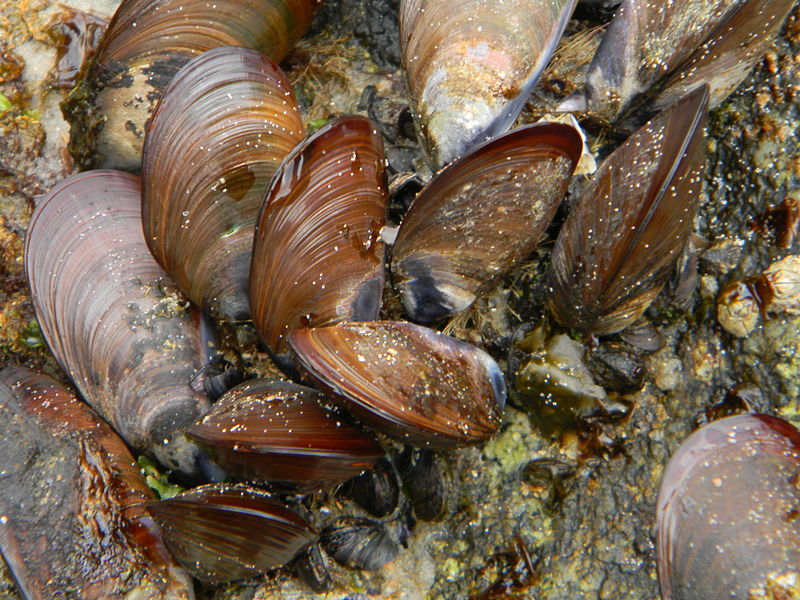We're open daily! View holiday hours
Science News
Mussel Adhesive
February 28, 2013

What do mussels have that we don’t? The ability to adhere to wet surfaces, for one. Until now, man-made properties don’t even come close to the “stickiness” of mussels under these conditions.
Herbert Waite at UC Santa Barbara has been curious about mussel adhesion since the late 1970s, when he started to study the properties of how mussels stay put in their turbulent, intertidal environments. He says, “Everyone thought I was crazy. ‘Why are you working on this?’” It was purely out of curiosity he studied the properties of mussel adhesion, but now it looks like there might be a significant practical application from these studies.
Marcus Textor is a Swiss scientist who worked a lot with graduate students on biomimetic processes—where engineering can follow clues from nature. His colleague, Phillip Messersmith, has similar interests, but uses bio-inspiration for medical purposes.
Building upon Waite’s research, Messersmith is working to create a surgical adhesive. All the tissues within the human body are wet, he explains. “We have a lot to learn from the mussel” to create an adhesive that works within the human body.
The three came together with Emily Carrington at the recent AAAS meeting in Boston to discuss mussel adhesion. Carrington described how different species make different materials at different times of the year.
The materials at work in mussels are called byssus threads. They’re strong fibers or filaments that the animals secrete to attach themselves to rocks and other materials. It appears that mussels are able to remove the water from the surface as they attach and then remain attached. Waite says that they are still actively looking at how mussels perform this feat—the organism may somehow be able to convert an amino acid to a dopa to displace surface water.
Messersmith has extracted and analyzed the proteins at work here, coming up with a synthetic property that is able to perform the same trick—adhering in water. He is in the preclinical stages, experimenting with the property in animal models, before testing in humans.
Carrington has found that mussel adhesion seems to diminish in warmer temperatures. This happens in nature and varies seasonally. Might it also happen more frequently as climate warms? She is trying to answer this question in her lab. Messersmith will be very curious to find out what she discovers as he applies it to his own research.
Image: Cianke/Wikipedia